Across the Sydney Children’s Hospitals Network, hourly drainage of CSF is documented in the electronic medical record in the I&O chart under CSF drainage.
Hourly EVD checks and CSF drainage is documented electronically in PowerChart, under Interactive View and I&O → Lines – Tubes – Drains → CSF Drainage Care.
Medical CSF Drainage Care:
- The Neurosurgical Registrar (or RMO on behalf of the Registrar) must prescribe drain height in cmH2O and instructions on the AdHoc form Medical CSF Drainage Documentation. Adhoc Charting → Inpatient Forms → CSF Drainage Care Medical Instructions.
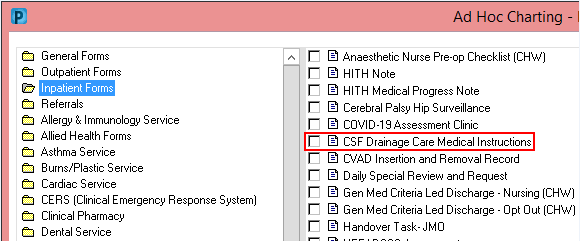
- The Medical CSF Drainage Documentation form automatically communicates iView (height of the burette in cmH2O, the frequency of the specimen and other comments, including drainage parameters).
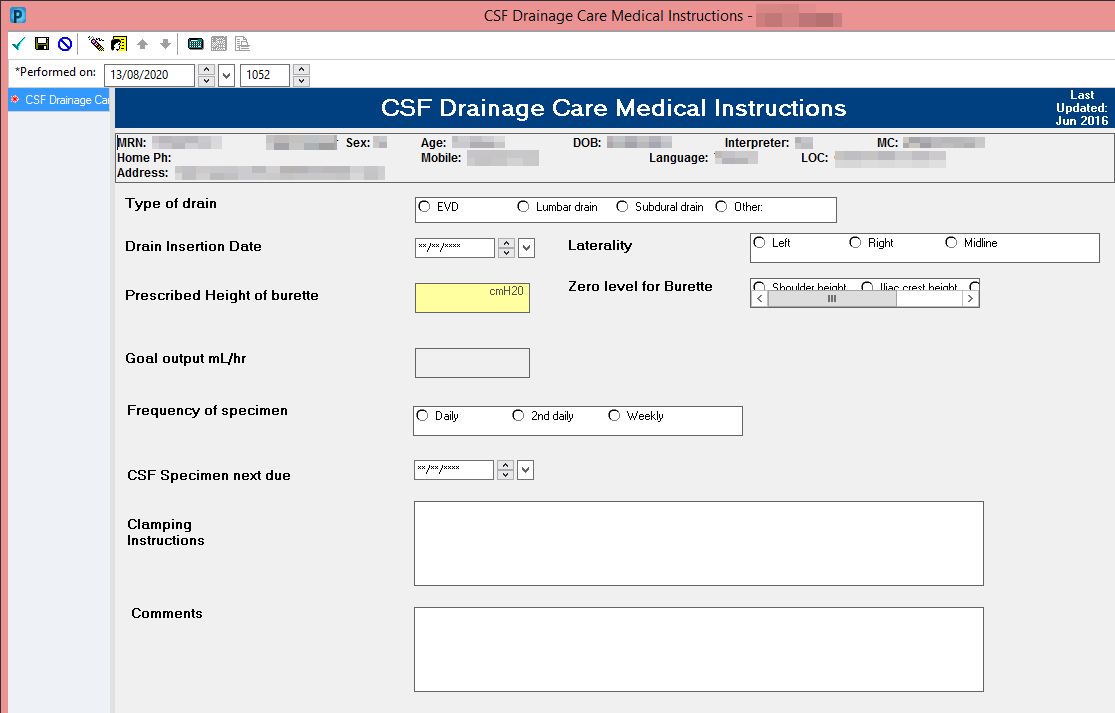
Nursing CSF Drainage Care:
- Nurses can access this information under Lines-Tubes-Drains à CSF Drainage Care.
- Under CSF drainage care, there is a Nursing CSF Drainage Document.
- Accredited Registered Nurses should document the height of the burette in cmH2O, if the drain is open or closed, oscillation/patency, drainage amount, the appearance of CSF and drainage site hourly. Specimen collection and bag changes are also documented here.
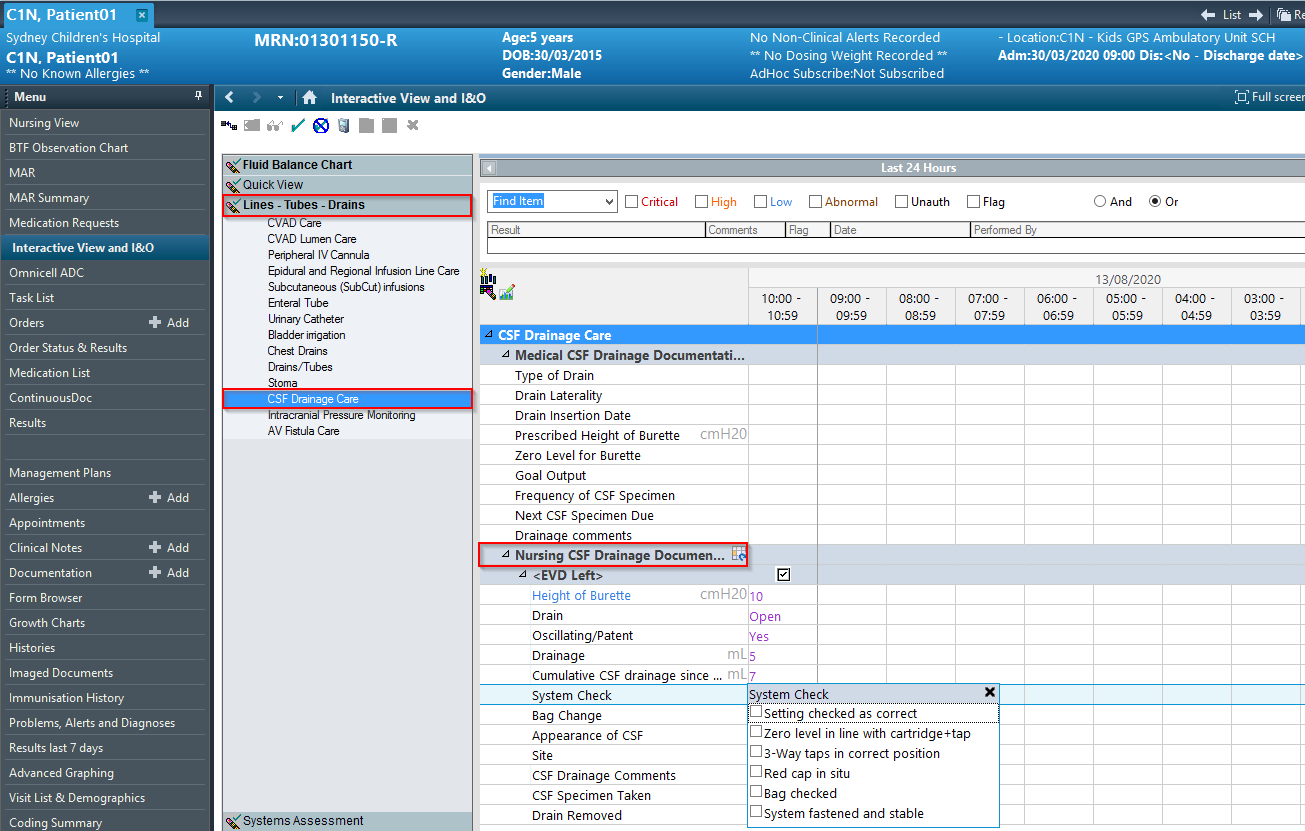
If the Neurosurgical Registrar cannot create a new form with a new prescribed height immediately:
- The Neurological Surgical Registrar can provide verbal instructions.
- Accredited Registered Nurses can enter a new prescribed height in the Medical CSF Drainage Documentation.
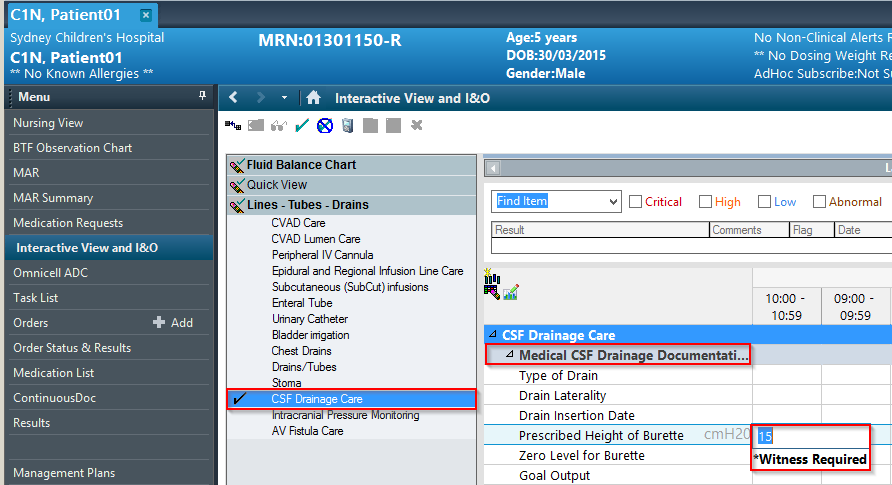
- Note that another Registered Nurse will have to witness the change.
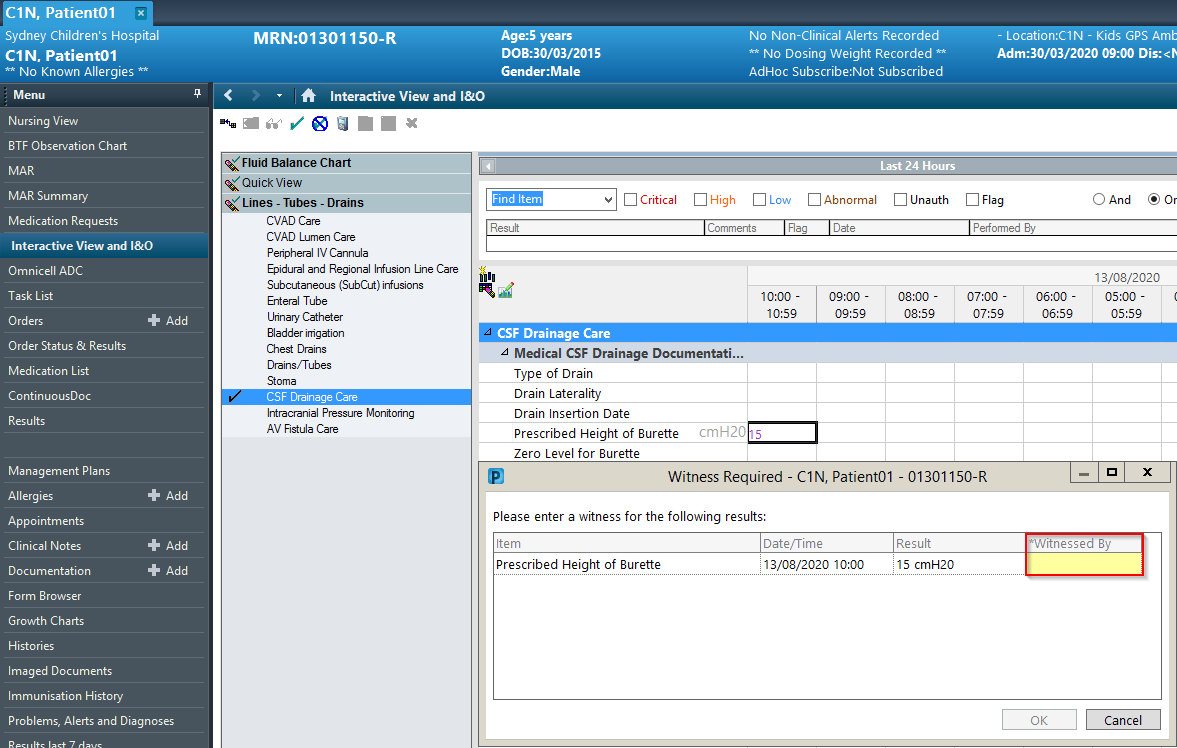
Please note: This document reflects what is currently regarded as safe practice. However, as in any clinical situation, there may be factors that cannot be covered by a single set of guidelines. This document does not replace the need for the application of clinical judgement to each individual presentation.